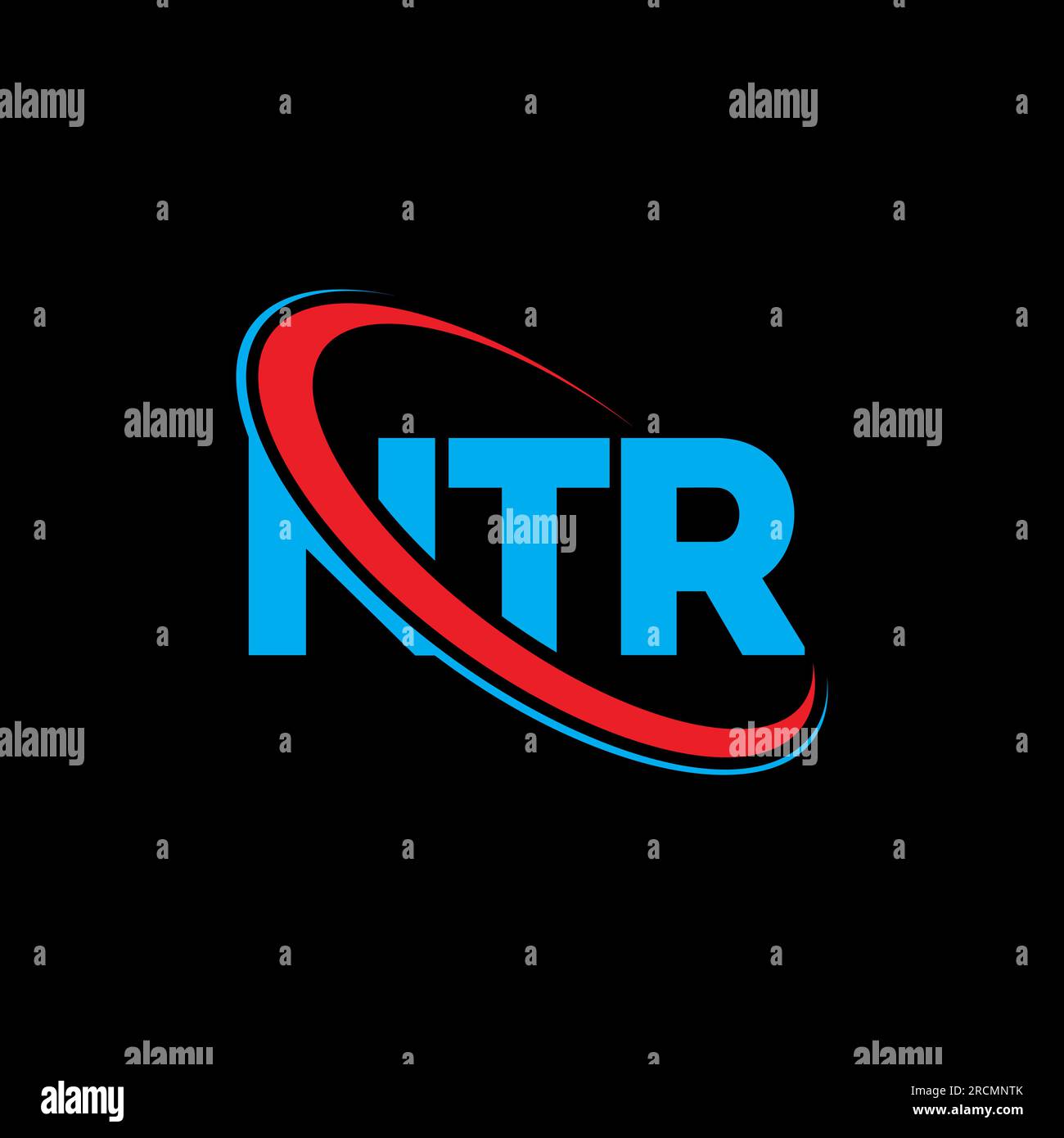NTS Vs NTR: The Ultimate Guide To Understanding These Radio Techniques
When it comes to modern radio communication, NTS and NTR are two terms that often pop up, especially in aviation and maritime industries. But what exactly are they, and how do they differ? Well, buckle up because we're about to dive deep into the world of NTS vs NTR. Whether you're a pilot, a maritime professional, or just someone who's curious about the technicalities of radio communication, this guide has got you covered.
Imagine you're flying at 30,000 feet, and all you've got is your radio to communicate with air traffic control. Or maybe you're on a ship in the middle of the ocean, relying on radio signals to stay connected. In both scenarios, NTS and NTR play crucial roles. But what do they actually mean? Let's break it down, shall we?
This isn't just another boring technical article. We're here to make sure you understand NTS vs NTR in a way that's both informative and engaging. So, grab a cup of coffee, and let's get started!
- Unveiling The Inspiring Journey Of Faith Adanza The Pinay Whorsquos Taking The World By Storm
- Bampb Storyline Updates The Latest Scoop You Dont Want To Miss
Before we jump into the nitty-gritty details, here's a quick overview of what you can expect from this article:
- What NTS and NTR actually mean
- How they differ from each other
- Real-world applications of both techniques
- Expert insights and tips to help you make the most of them
Table of Contents
- What is NTS?
- What is NTR?
- Key Differences Between NTS and NTR
- Applications of NTS and NTR
- Advantages of NTS
- Advantages of NTR
- Challenges in Implementing NTS and NTR
- Impact on Aviation and Maritime Industries
- Future Trends in NTS and NTR
- Conclusion
What is NTS?
NTS, or Non-Transmitter Station, is a term used in radio communication, particularly in aviation and maritime contexts. Think of it as a silent partner in the world of radio waves. An NTS doesn't transmit signals but plays a vital role in navigation and communication systems. Instead of sending out signals, it acts as a receiver or a reference point for other stations.
In aviation, NTS is often used in conjunction with VOR (VHF Omnidirectional Range) systems. Pilots use these stations to determine their exact position in the air. It's like having a lighthouse for airplanes, guiding them safely to their destination. And trust me, when you're flying at 500 mph, having accurate navigation tools is not just important—it's critical.
- Burger King Airplane Guy The Untold Story Behind The Viral Sensation
- Burger King Plane Incident The Inside Story You Didnrsquot Know About
How Does NTS Work?
NTS stations are strategically placed around the globe to provide continuous coverage for pilots and mariners. They work by receiving signals from other stations and using triangulation techniques to calculate the user's position. It's a bit like playing a high-tech game of "Marco Polo," where the NTS station listens for signals and figures out where you are based on the responses.
One cool thing about NTS is that it doesn't interfere with other radio communications. Since it doesn't transmit, it avoids cluttering the airwaves. This makes it an ideal solution for areas with heavy radio traffic, like busy airports or shipping lanes.
What is NTR?
NTR, or Non-Transponder Reporting, is another important concept in the world of radio communication. Unlike NTS, NTR involves the use of transponders—devices that transmit signals in response to an inquiry. These transponders are commonly found in aircraft and ships, helping air traffic controllers and maritime authorities keep track of their movements.
Think of NTR as a digital handshake between your vehicle and the control center. When a radar station sends out a signal, the transponder on your aircraft or ship responds with specific information, such as altitude, speed, and identification. This allows controllers to monitor your position and ensure safe separation from other vehicles.
Why is NTR Important?
NTR plays a crucial role in maintaining safety and efficiency in both aviation and maritime industries. By providing real-time data about the position and status of vehicles, it helps prevent collisions and ensures smooth operations. It's like having a virtual traffic cop watching over you, making sure everyone stays in their lane.
Key Differences Between NTS and NTR
Now that we've got a basic understanding of both NTS and NTR, let's take a closer look at how they differ. Here are some of the key differences:
- Function: NTS acts as a receiver or reference point, while NTR involves active transmission of signals.
- Usage: NTS is primarily used for navigation, whereas NTR is used for tracking and monitoring.
- Technology: NTS relies on triangulation techniques, while NTR uses transponders to communicate with radar stations.
- Interference: NTS doesn't interfere with other radio communications, whereas NTR can add to the congestion of airwaves if not properly managed.
Understanding these differences is essential for anyone working in the aviation or maritime industries. It helps you choose the right technology for your specific needs and ensures optimal performance.
Applications of NTS and NTR
Both NTS and NTR have a wide range of applications across various industries. Here are some of the most common uses:
NTS Applications
- Air Traffic Control: NTS stations help pilots navigate through complex airspace by providing accurate positional data.
- Maritime Navigation: Ships use NTS to determine their location and avoid collisions in busy waterways.
- Search and Rescue: NTS can be used to locate distressed vehicles in remote areas, making rescue operations more efficient.
NTR Applications
- Air Traffic Monitoring: NTR allows air traffic controllers to keep track of all aircraft in their airspace, ensuring safe separation and efficient traffic flow.
- Maritime Surveillance: Ships equipped with transponders can be monitored by coastal authorities to prevent accidents and enforce maritime laws.
- Weather Monitoring: NTR can be used to gather data about weather patterns, helping meteorologists predict storms and other weather events.
Advantages of NTS
NTS offers several advantages that make it a valuable tool in radio communication:
- No Interference: Since NTS doesn't transmit signals, it avoids cluttering the airwaves and reduces the risk of interference.
- High Accuracy: NTS provides precise positional data, making it ideal for navigation and other critical applications.
- Cost-Effective: NTS stations are relatively inexpensive to install and maintain, making them a cost-effective solution for many organizations.
These advantages make NTS a popular choice for industries that rely heavily on radio communication. Whether you're flying a plane or sailing a ship, NTS can help you stay on course and avoid potential hazards.
Advantages of NTR
NTR also has its own set of advantages that make it a valuable asset in the world of radio communication:
- Real-Time Data: NTR provides instant updates about the position and status of vehicles, enabling controllers to make informed decisions quickly.
- Enhanced Safety: By tracking all vehicles in an area, NTR helps prevent collisions and ensures safe operations.
- Improved Efficiency: NTR allows for better traffic management, reducing delays and increasing overall efficiency.
These benefits make NTR an essential tool for air traffic controllers and maritime authorities. It helps them keep tabs on all vehicles in their jurisdiction, ensuring smooth and safe operations.
Challenges in Implementing NTS and NTR
While both NTS and NTR offer numerous advantages, there are also some challenges associated with their implementation:
- Infrastructure Requirements: Both systems require a robust infrastructure of stations and equipment, which can be costly to set up and maintain.
- Technical Complexity: NTS and NTR involve complex technologies that require specialized knowledge and training to operate effectively.
- Regulatory Compliance: Organizations must comply with various regulations and standards when implementing these systems, adding another layer of complexity.
Overcoming these challenges requires careful planning and collaboration between stakeholders. By investing in the right infrastructure and training, organizations can maximize the benefits of NTS and NTR while minimizing the risks.
Impact on Aviation and Maritime Industries
The impact of NTS and NTR on the aviation and maritime industries cannot be overstated. These technologies have revolutionized the way we navigate and communicate, making air and sea travel safer and more efficient than ever before.
In aviation, NTS and NTR have enabled air traffic controllers to manage increasingly busy skies with greater precision and efficiency. Pilots can now rely on accurate positional data to navigate through complex airspace, reducing the risk of accidents and improving overall safety.
In the maritime industry, NTS and NTR have helped prevent collisions and ensure safe passage through busy waterways. Ships equipped with these technologies can be monitored in real-time, allowing authorities to respond quickly to any potential threats.
Future Trends in NTS and NTR
As technology continues to evolve, we can expect to see some exciting developments in the world of NTS and NTR:
- Integration with AI: Artificial intelligence is likely to play a bigger role in NTS and NTR systems, enabling more advanced data analysis and decision-making capabilities.
- Enhanced Connectivity: The rise of 5G and other high-speed communication technologies will improve the performance of NTS and NTR systems, making them faster and more reliable.
- Increased Automation: Automation will continue to transform the aviation and maritime industries, with NTS and NTR playing key roles in these advancements.
These trends will shape the future of radio communication, making it more efficient, accurate, and secure than ever before. By staying ahead of the curve, organizations can leverage these technologies to gain a competitive edge in their respective industries.
Conclusion
So, there you have it—a comprehensive guide to understanding NTS vs NTR. Both technologies have their own unique strengths and applications, making them indispensable tools in the world of radio communication.
Whether you're in aviation or maritime, knowing the ins and outs of NTS and NTR can help you make better decisions and improve your operations. So, take the time to learn more about these technologies and see how they can benefit your organization.
And remember, if you found this article helpful, don't forget to share it with your friends and colleagues. Who knows? You might just help someone else navigate the world of radio communication a little better. Until next time, stay safe and keep communicating!



Detail Author:
- Name : Mrs. Mittie Kemmer
- Username : gpacocha
- Email : kay.stanton@davis.com
- Birthdate : 2006-01-10
- Address : 920 Esperanza Point Suite 822 South Shanny, DE 46944-3599
- Phone : +18723293012
- Company : Frami Inc
- Job : Radiologic Technologist and Technician
- Bio : In nam quisquam hic laborum est enim et dicta. Impedit dolore aut officiis ut. Omnis alias in inventore. Quo eius sint est.
Socials
twitter:
- url : https://twitter.com/yvonne_real
- username : yvonne_real
- bio : Et esse ut id nisi autem atque ut optio. Harum alias eum unde sed perferendis nisi. Et est eos maxime quae. Nihil sapiente quis eligendi distinctio dolorem.
- followers : 2214
- following : 2922
linkedin:
- url : https://linkedin.com/in/yvonne_real
- username : yvonne_real
- bio : Ut magnam velit voluptatem.
- followers : 2708
- following : 2615
facebook:
- url : https://facebook.com/schuppey
- username : schuppey
- bio : Et voluptas pariatur non modi ut qui.
- followers : 1153
- following : 176
tiktok:
- url : https://tiktok.com/@schuppey
- username : schuppey
- bio : Quis iste voluptas voluptatem itaque debitis rerum.
- followers : 2282
- following : 859
instagram:
- url : https://instagram.com/schuppey
- username : schuppey
- bio : Sit autem impedit placeat ex et. Aut id et voluptatibus.
- followers : 6155
- following : 1451